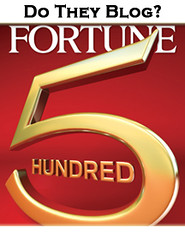You know I’m meaner now, don’t you?” — The Recruiting Animal
This was the opening sentence in an e-mail that invited me back as a guest on “The Recruiting Animal Shoooow!” While it might have warned some people away from the shock jock of recruiting radio, it didn’t phase me.
Sure, there might have been a time that I would have raised an eyebrow, but not anymore.
When it comes to social media, The Recruiting Animal has branded himself apart from many other people who blog and talk about recruiting by being a little more free spirited, straightforward, sometimes grittier, and always funnier than others who write and talk about similar topics. I respect that.
Some professionals and companies do not. They tend to shy away from social media because they are too afraid of what other people might think, say, or do. Personally, I think that’s baloney. If your professional or company message cannot stand up to a challenge now and again, then your message probably doesn’t have much merit at all.
Maybe that’s why if any central theme did emerge from the show yesterday, it was that most companies, and maybe recruiters, do not know what differentiates them from others in the marketplace, which basically means they don’t have a message.
Right. Simply saying “I’m a recruiter” is not really a message; it’s a job description. So while that might hold up in a casual conversation at a bar, it doesn’t do much to help a prospect decide why they might choose to work with one recruiter over another. It doesn’t hold up very well under a challenge.
Too many people are still putting the cart before the horse.
The problem isn’t exclusive to recruiting. It’s in every industry. It seems most people have no idea what sets them or their company apart from anyone else. Worse, many tell their customers that they want to emulate someone else without any thought given to how they might be different. It even sheds some light on a Twitter comment Animal pointed to just prior to the show.
“I love it when marketing people have NO idea what their client does.” — Yin Chang
Of course marketing people don’t have any idea. Not all of their clients know what their companies do either. And when that is the case, they become delusional and begin to think that simply outpacing the competition’s media buy will be enough. Um, sometimes. Maybe. Not really.
A clear contrast between people or products can help customers, clients, and consumers make the best choice for them. And until professionals and companies begin to define what those contrasts might be, it doesn’t make a lot of sense to fill up space simply because it’s there. It might even be better to stay home if you don't have a message.
The bottom line: if companies invest more time in understanding who they are and what differentiates them in the marketplace, it might become significantly easier to determine where to invest their marketing dollars.
At minimum, it could help a company manage its communication instead of avoiding social media all together or, worse, allowing the long tail of social media to wag the company dog.
Sure, some people claim it was “gutsy” for Chevy Tahoe to “take control of their brand.” When it was brought up during the show, it seemed to me allowing consumers to “control” a brand seemed kind of silly, especially because it put their customers in the line of fire.
But the more I learned about the Chevy Tahoe contest, it didn’t take long to see that GM never gave its brand away to social media as some seem to claim. And, upon closer review, there was hardly ever a crisis.
GM simply engaged consumers and allowed them to make their own commercials. Then, when a small number of people decided to provide an environmental context instead of a commercial context, GM had an opportunity to talk about their increasingly green focus.
So did they ever give control of its brand to someone else? I think not. It seems more likely they were managing their message all along, which is what Steve Hall seemed to conclude as well.
Not that it matters. The Chevy Apprentice contest is over and other than a few ads still appearing on You Tube, all the content, good and bad, is gone.

This was the opening sentence in an e-mail that invited me back as a guest on “The Recruiting Animal Shoooow!” While it might have warned some people away from the shock jock of recruiting radio, it didn’t phase me.
Sure, there might have been a time that I would have raised an eyebrow, but not anymore.
When it comes to social media, The Recruiting Animal has branded himself apart from many other people who blog and talk about recruiting by being a little more free spirited, straightforward, sometimes grittier, and always funnier than others who write and talk about similar topics. I respect that.
Some professionals and companies do not. They tend to shy away from social media because they are too afraid of what other people might think, say, or do. Personally, I think that’s baloney. If your professional or company message cannot stand up to a challenge now and again, then your message probably doesn’t have much merit at all.
Maybe that’s why if any central theme did emerge from the show yesterday, it was that most companies, and maybe recruiters, do not know what differentiates them from others in the marketplace, which basically means they don’t have a message.
Right. Simply saying “I’m a recruiter” is not really a message; it’s a job description. So while that might hold up in a casual conversation at a bar, it doesn’t do much to help a prospect decide why they might choose to work with one recruiter over another. It doesn’t hold up very well under a challenge.
Too many people are still putting the cart before the horse.
The problem isn’t exclusive to recruiting. It’s in every industry. It seems most people have no idea what sets them or their company apart from anyone else. Worse, many tell their customers that they want to emulate someone else without any thought given to how they might be different. It even sheds some light on a Twitter comment Animal pointed to just prior to the show.
“I love it when marketing people have NO idea what their client does.” — Yin Chang
Of course marketing people don’t have any idea. Not all of their clients know what their companies do either. And when that is the case, they become delusional and begin to think that simply outpacing the competition’s media buy will be enough. Um, sometimes. Maybe. Not really.
A clear contrast between people or products can help customers, clients, and consumers make the best choice for them. And until professionals and companies begin to define what those contrasts might be, it doesn’t make a lot of sense to fill up space simply because it’s there. It might even be better to stay home if you don't have a message.
The bottom line: if companies invest more time in understanding who they are and what differentiates them in the marketplace, it might become significantly easier to determine where to invest their marketing dollars.
At minimum, it could help a company manage its communication instead of avoiding social media all together or, worse, allowing the long tail of social media to wag the company dog.
Sure, some people claim it was “gutsy” for Chevy Tahoe to “take control of their brand.” When it was brought up during the show, it seemed to me allowing consumers to “control” a brand seemed kind of silly, especially because it put their customers in the line of fire.
But the more I learned about the Chevy Tahoe contest, it didn’t take long to see that GM never gave its brand away to social media as some seem to claim. And, upon closer review, there was hardly ever a crisis.
GM simply engaged consumers and allowed them to make their own commercials. Then, when a small number of people decided to provide an environmental context instead of a commercial context, GM had an opportunity to talk about their increasingly green focus.
So did they ever give control of its brand to someone else? I think not. It seems more likely they were managing their message all along, which is what Steve Hall seemed to conclude as well.
Not that it matters. The Chevy Apprentice contest is over and other than a few ads still appearing on You Tube, all the content, good and bad, is gone.
























